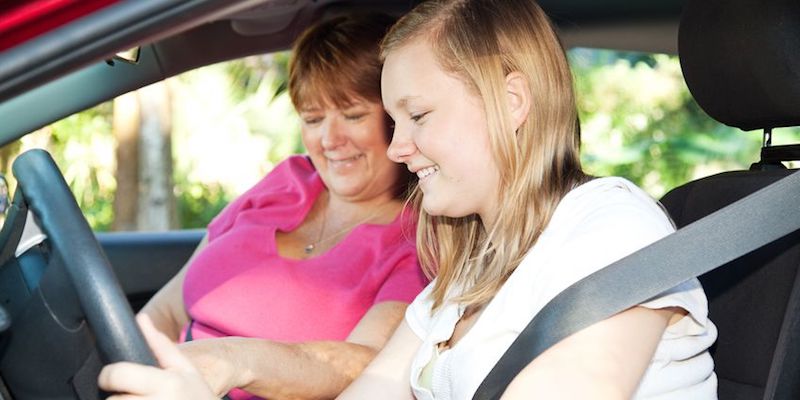The Insurance Institute for Highway Safety recommends 115 used car and truck models for parents shopping for their teens’ first set of wheels. All of the vehicles are midsize or larger models.
Safety Lab’s Choices Show That Bigger Is Better
Giving into your teenager’s plea for a car may be the happiest moment of his or her life, but that same moment may fill you with dread as fears about your child getting into a serious auto accident surface.
But you can reduce your worries, somewhat, by choosing a vehicle that has a proven safety record. The Insurance Institute for Highway Safety (IIHS), known best for its Top Safety Pick ratings for new cars and trucks, recently published its top picks of used vehicles for teens. The list features 53 Best Choices, starting under $20,000 and 62 Good Choices, which start under $10,000. All of the vehicles are midsize vehicles or larger.
IIHS advises parents to resist the urge to buy cheaper, smaller, “cuter” cars for their sons and daughters. Backed by decades of experience crashing thousands of vehicles in its labs, IIHS has concluded that bigger rides are safer rides.
In Auto Accidents, It’s Survival of the Biggest
Putting your child in the cute, tiny car he or she is asking for is a safety mistake, IIHS officials say, because even small and mini-cars with otherwise terrific safety ratings get crushed when they collide with bigger vehicles. To illustrate this seemingly immutable natural law, IIHS paired large and small vehicles in head-on collision tests in its laboratory, choosing big and small models by the same manufacturers.
In these gladiator mashups, it became clear that a 2018 Kia Forte compact sedan was no match for a 2016 Kia Sorento SUV in a head-on crash. The 2018 Toyota Yaris iA mini-car was a loser when it went nose-to-nose with a 2015 Toyota Avalon.
The irony is that IIHS awarded both the Forte and the Yaris good ratings for protecting their drivers, and the 2018 Forte won the safety lab’s Top Safety Pick+ award that year. The designations indicate the relative safety of those models within their vehicle classes, but those comparisons don’t work with vehicles in different size and weight classes.
Example: A small car might protect its driver well enough as it hits a concrete wall at 40 mph — a test where the main factor is the vehicle’s own weight. Things are different when that same car collides with a second vehicle weighing 900 pounds more than the first.
Test dummies in the smaller cars crashed by IIHS have faced much more severe forces and simulated injuries than the dummies placed behinds the wheels of the larger vehicles.
Other Factors at Play
IIHS shared more guiding factors than mere size and weight:
- Teenagers should avoid high-horsepower models. Remove the temptation to push the limits.
- Electronic stability control is a must-have factor. The systems, which help drivers keep control of their vehicles on curvy and slippery roads, are on a par with seat belts for reducing safety risks.
- Buyers should look for vehicles with the best general safety ratings they can afford. Choose a vehicle with good IIHS ratings for structural integrity and restraints, or those models with four-five stars from the National Highway Traffic Safety Administration.
Jessica Cicchino, IIHS Vice President for Research, said:
“We know safety is just one of the factors people consider when choosing a vehicle but we hope parents will give it extra consideration when purchasing a vehicle for a teenager… Teen drivers are at greater risk, due to immaturity and inexperience behind the wheel.”
More Advice From Experts
Automotive industry publisher Edmunds warns parents to take every available means to teach their teenagers the rules of the road before giving them a car. It points to safety ratings by IIHS and the National Highway Traffic Safety Administration for guidance on finding models that will hold up well in a car accident.
And while it sides with IIHS over the disadvantages of tiny cars, Edmunds recommends that parents avoid trucks, full-size sedans, and large SUVs as well. Their size can make them difficult for young drivers to control and their high centers of gravity make the vehicles susceptible to rollovers if the driver loses control. It says that trucks and large SUVs are also susceptible to rollovers because of their high centers of gravity. As IIHS does, Edmunds recommends that parents avoid models with high-powered engines for their children. Take the model with the four-cylinder engine, not the V6.

